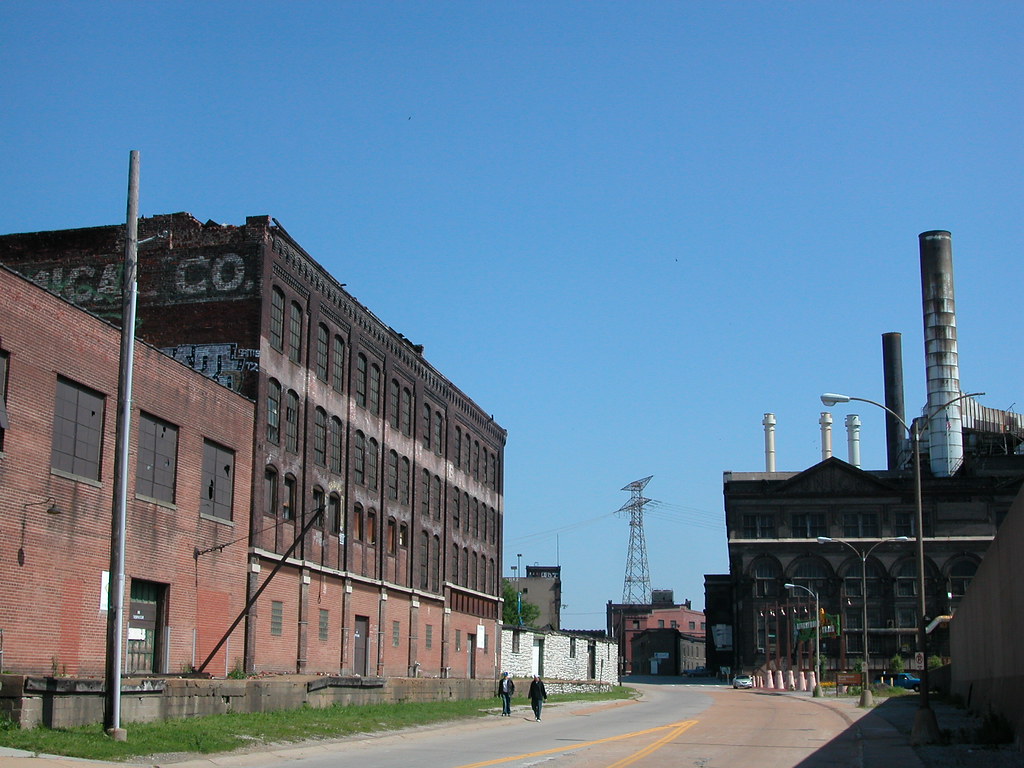
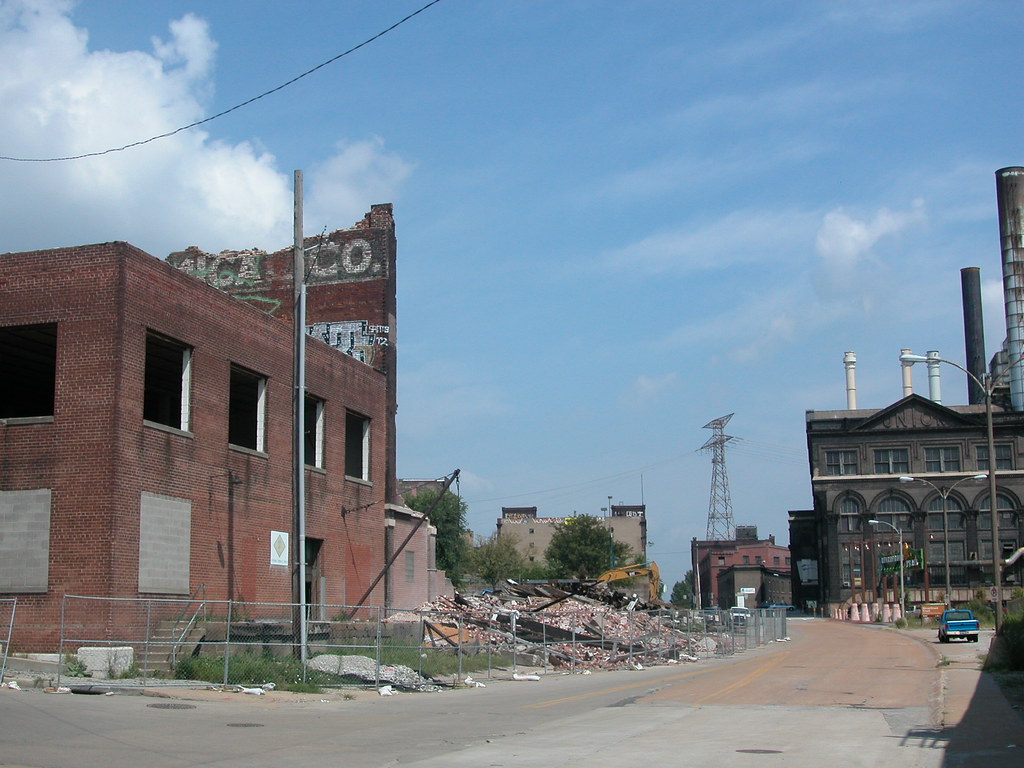
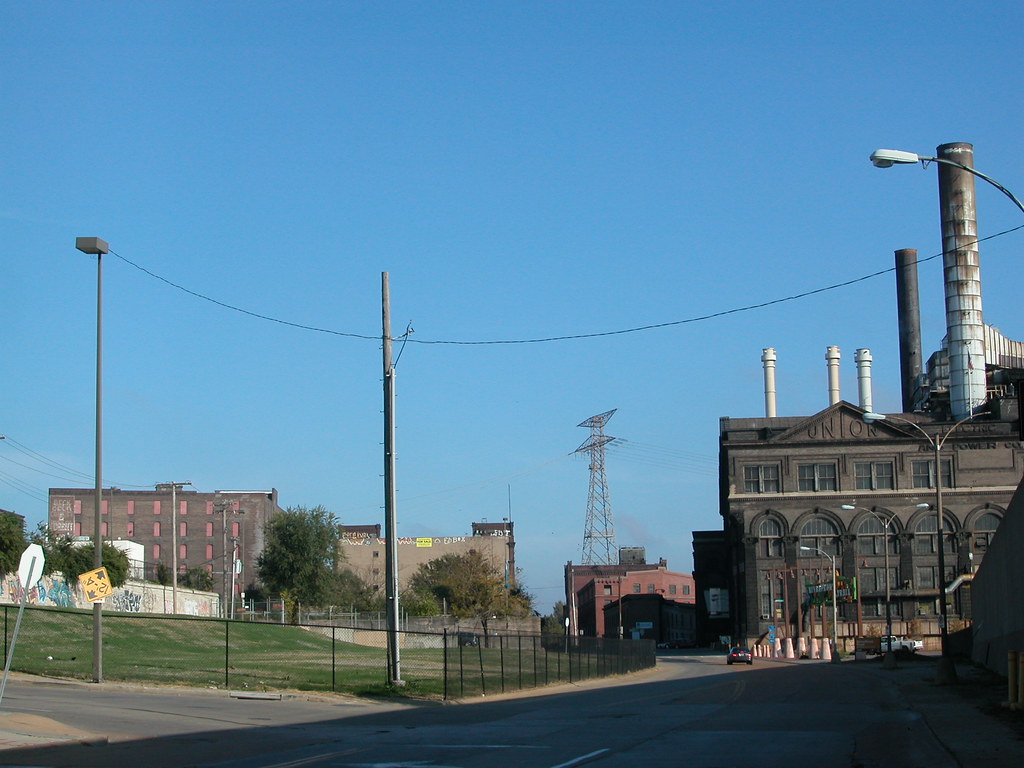
I have pushed off writing further on the now-demolished McPheeters warehouses on Lewis Street just because doing so seemed fruitless. After all, there is no way to return the important lost buildings, and little point in aggressively emphasizing the obvious -- that the demolition of the warehouses was probably city government's biggest preservation failure of 2008.
However, the more that I think about the fine original warehouse, with its adaptable mill method body, or the one-story cold storage building whose true historic significance will never be fully established, I am upset. I think about what the site looks like now, which is worse even from the perspective of the most city-fearing casino patron. I think about what we learned during the demolition: that the central 1881 building was actually built onto the city's bluff, using a natural limestone wall as part of its foundation (and the source of major water leaching into the building's timber beams, causing the west wall collapse). I think about how we could have learned from the cold storage building and figured out much about St. Louis shipping, brewing, packing and other industries. We can still learn, of course, but without physical evidence it's hard. We have lost a lot, and gained nothing.
The Land Clearance for Redevelopment Authority wrecked the buildings with public funds, but the instigator was Pinnacle Entertainment, owners of the adjacent Lumiere Place casino complex. At the city's Preservation Board, St. Louis Development Corporation Deputy Director Otis Williams -- a man with a very difficult job, mind you -- told the Board that Pinnacle feared loss of revenue without enhancement of its surroundings. The old buildings, missing roof and wall sections, had to go in the name of economic development.
Specious as this case may be on the face, there was truth inside of it. City government ought to take measures within its powers to stabilize the surroundings of businesses and homeowners who have made significant investments. In this case, LCRA was the owner of the McPheeters warehouses, and held the duty to improve the buildings.
However, there is short-term enhancement and there is long-term enhancement. Charged with the public good, rather than merely carrying out the wishes of private parties, city government has the power to challenge economic logic when it serves a singular interest and when its execution would deprive broader economic and cultural benefit. In the case of the McPheeters warehouses, rehabilitation of the buildings would have been the greater good, and demolition the lowest. All that demolition did was provide instant gratification to a large and stable company that had already made its primary investment.
In this case, city government should have taken Pinnacle's demand and raised it. LCRA could have spent comparable funds to demolition cost and used them to stabilize the western wall of the center warehouse, which had partly collapsed, and made some roof repairs to the rest of the complex. I doubt that the budget would have accomplished total stabilization, but it would have effectively mothballed them and prevented their loss.
Preservation would have been helpful to the developers and non-profit organizations that are trying to spark development in the North Riverfront Historic District. Preservation would have enhanced the scenic ride from the Arch grounds to the start of the north riverfront trail. Preservation would have allowed people to some day live or work right on the river, near downtown, the trail and even Lumiere Place. Preservation would have bridged the visual gap between Laclede's Landing and the North Riverfront Historic District, abating the impact of Lumiere Place by making it seem less disruptive. Preservation would have kept the second-nature of building materials and embodied energy in place for eventual re-use. As we know, energy and materials are valuable through growing scarcity, and their conservation is both ecologically sound and economically smart.
Obviously, Pinnacle wanted short-term satisfaction for Lumiere Place managers and guests. City government could have balanced that desire with one encompassing the desires of others, the need to safeguard the city's cultural resources and the need to enhance and spur future investment as well as safeguarding existing investment. In other words, city government could have brought planning into the discussion. Instead, it capitulated to one company's short term desire, forever removing a development opportunity for other developers or even that company itself.
The photos below, taken during demolition, show that even the short-term effect of the demolition is not gain. While the buildings are gone, the sidewalks and streets around them are broken up, uneven and unsightly. Sidewalk and street repair here would bring public benefit, and do far more to make people think that the area is safe and healthy than demolition. I fail to see how any one's long-term desires were met by LCRA's decision to demolish the McPheeters warehouses.
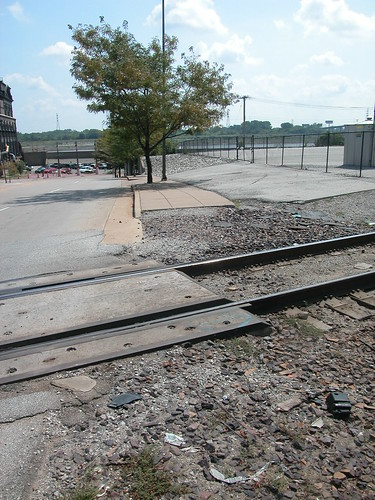
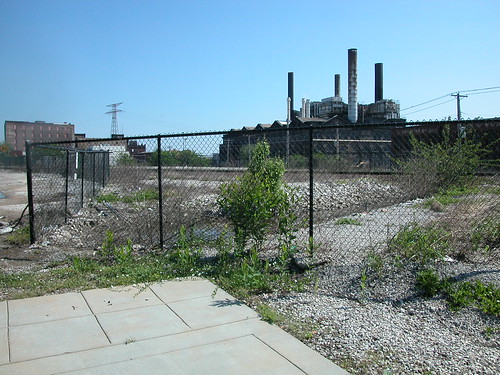 | 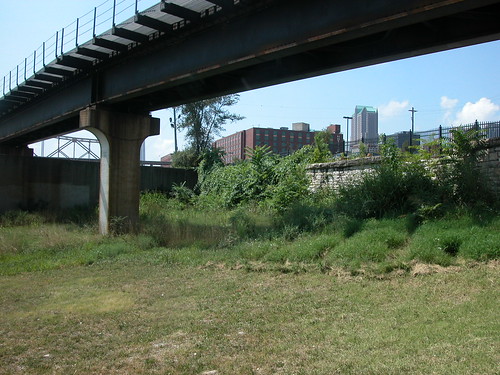 |
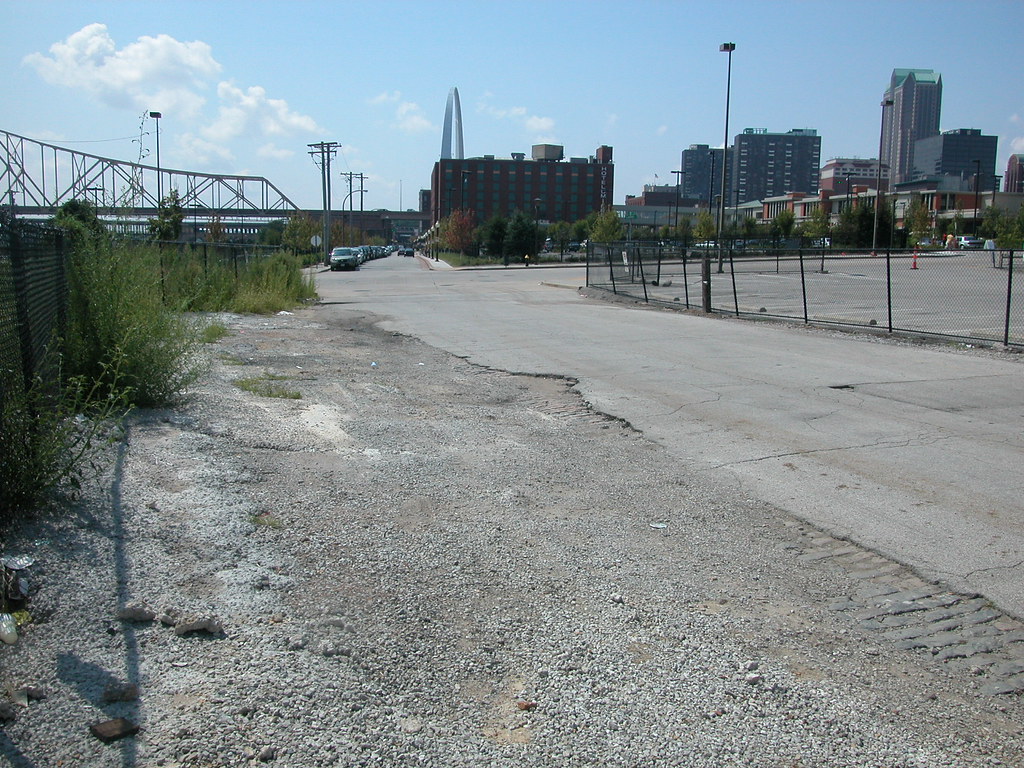





9 comments:
This truely would have been the catalyst for North Riverfront Redevelopment.
I know because I work there.
The plethora of buildings which could be put into adaptive reuse, into residential and commercial, staggers. Some lots might not be viable for such a change, however could be used for, once again, warehousing and light industrial.
Rather than scrap metal yards we could have businesses which actually contribute to the City. Put McKee's buildings there!
I saw these warehouses often as I eat lunch on Lacledes Landing. Driving down Broadway, it's so clear what should be done. Then coming upon these warehouses and the Casino, with its sea of parking, private streets, fences -- all defensible space planning -- it's obvious why these were demolished: the scary City freaking out suburban patrons. Ironically the remnants of a demolition, as opposed to a sign saying "For Sale, Ideal for Rehab" entices greater feelings of faceless muggers and rapists.
St. Louis lost a huge asset with the demolition of these warehouses. They could have been rehabbed effortlessly, especially under different economic circumstances. As I personally work on North Broadway, and ironically for a company that does cold storage, I find this demolition to be an affront to our history as well as yet another self-inflicted gunshot wound. When will St. Louis' Politicians weigh campaign contributions against actual planning and think before they issue demolition permits?
Vancouver provides the ideal example. Their political and business leaders, as well as citizens, took up an agenda which stresses dense urban construction. In the 1970's they set out their vision and continued planning. The outcome bears whiteness to that process: insane population growth.
St. Louis needs actual review before it destroys what makes it desirable. Rather preservation should be the initial goal and demolition when not viable. Alas much work to be done.
I understand the struggle the city is faced with. On the one hand, the city of St. Louis is the best in the area for "saving" or rather rehabbing old buildings. With the bad economy getting worse, I think it will tougher not easier for the city to save old buildings. A big problem is the county businessmen will not invest in the city completely. They will develope one building at a time instead of whole blocks like you would find in east coast cities. I think we need to continue to try to work with the city to get more developers to committ to the city and rebuild whole areas not just piecemeal buildings.
The explanation that it would damage the aesthetic enjoyment of casino goers was always a canard in my opinion. When I went and photographed these warehouses, there was nobody in sight, despite the casino being busy at the same time. Quite simply, there were not large numbers of casino patrons accidentally wandering by these perfectly fine structures.
I'm still steamed about this, for all the reasons you guys mentioned.
This just seems completely senseless to me.
Do people wonder why everyone leaves St. Louis after high school? Every single one of the families (native to STL for generations) that lived on my block in the CWE have now relocated to the West coast. It's because of things like this. This total destruction leaves my head spinning!!! Not really anyone that lives out here talks about St. Louis anymore; I think they've all just buried it.. as if it's dead to us now. Not me. I miss St. Louis. I miss the architecture... what's left of it.
that lived on my block in the CWE have now relocated to the West coast. It's because of things like this.
Where do they live on the West Coast that has blocks like those in the CWE?
I left St. Louis after high school--and came back ten years later because I didn't want to buy a shoebox for 500,000, like I would have to in DC.
I just bought a great house for $100K and have nothing but optimism for the future of St. Louis. Trust me, even in "wonderful" Chicago, San Francisco or New York, great old building get torn down by the dozen every month.
Personally, I want all the naysayers and people who hate St. Louis to leave, and let us who love our home town in peace.
"St Louis Rising" to be added to Orwell's absolute truths from the Ministry of Truth? Don't forget the Inner Party prefers power over progress. The buildings never existed.
Vote for A, it will secure the success of our schools as recommended by our great and glorious casinos. Doublethink will save your soul.
Where's the victory gin? I'll drink to that.
Post a Comment